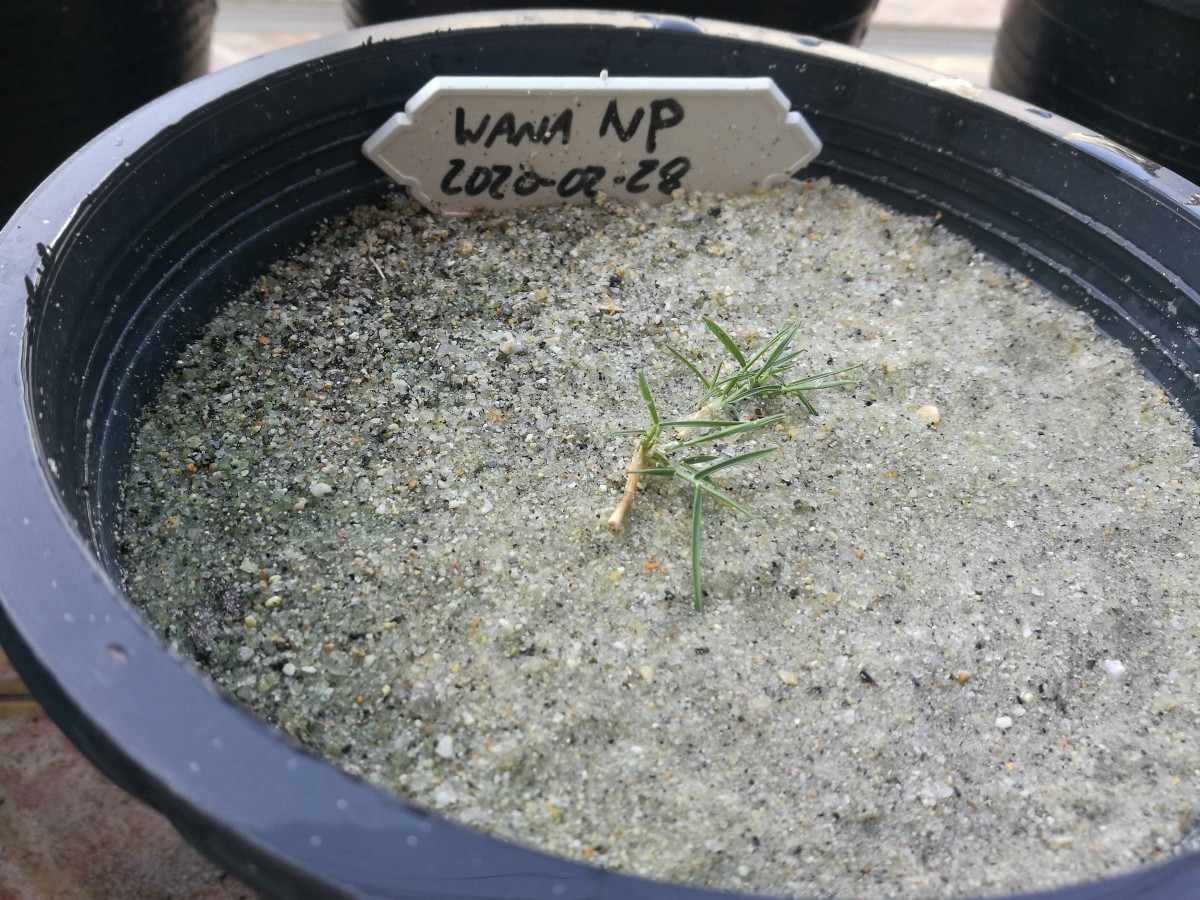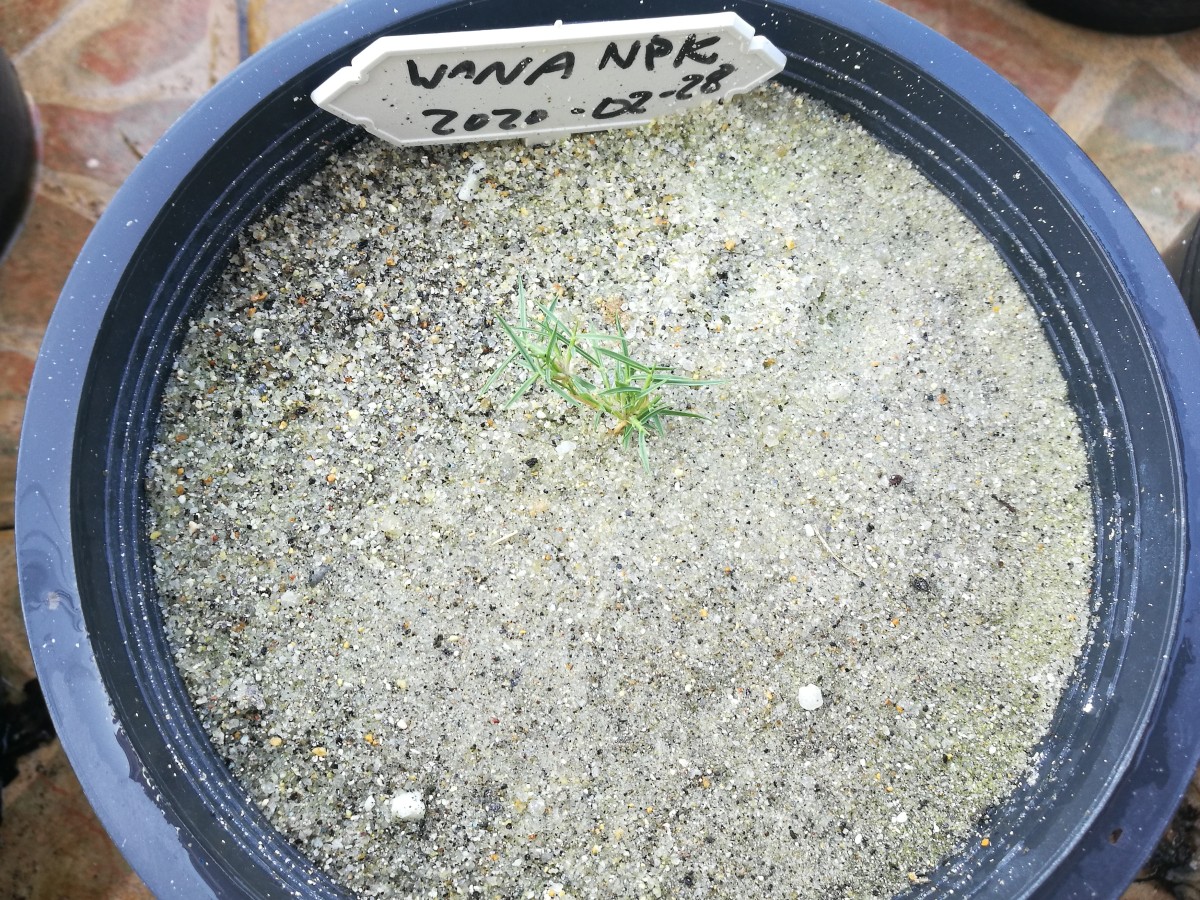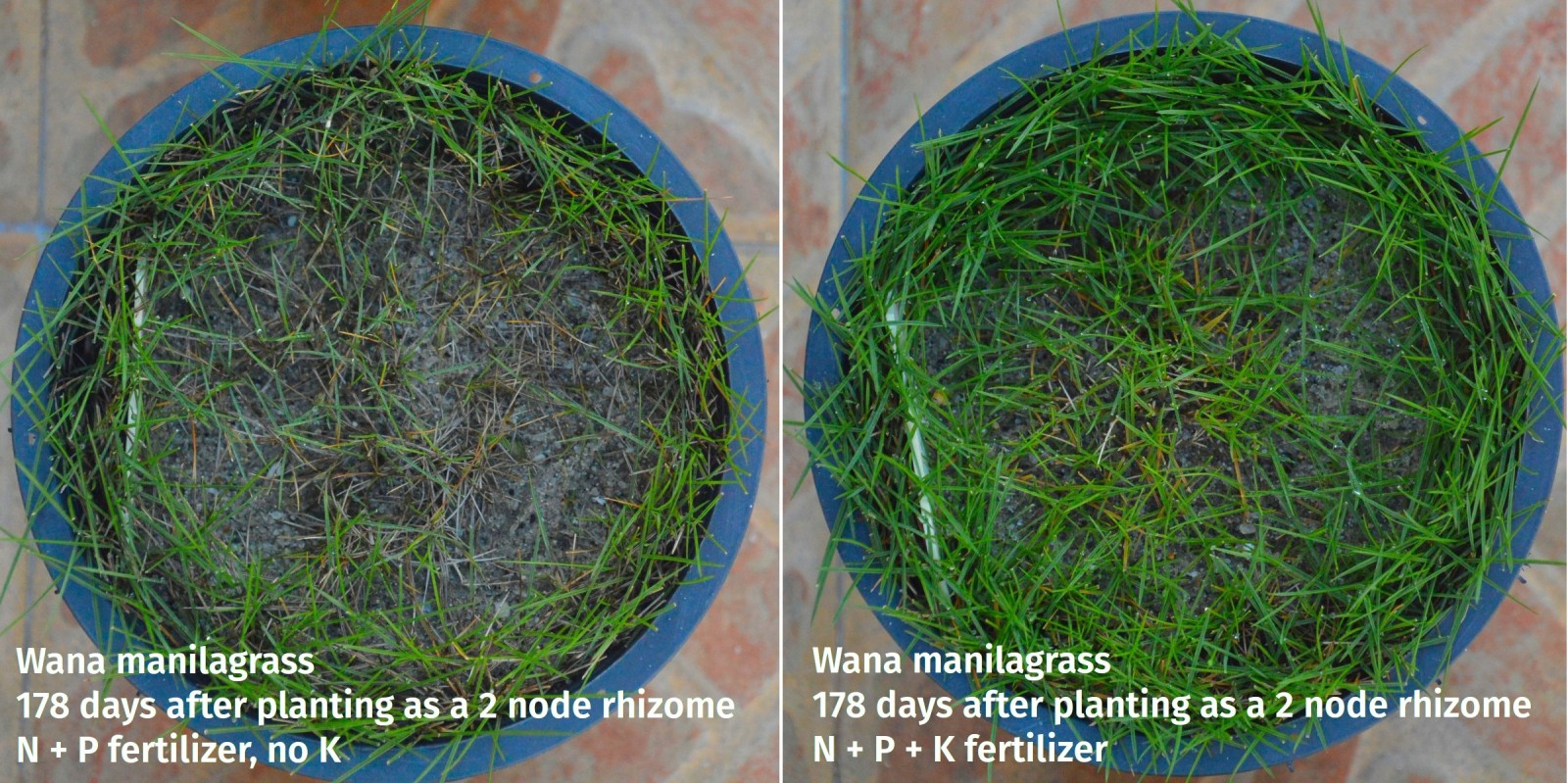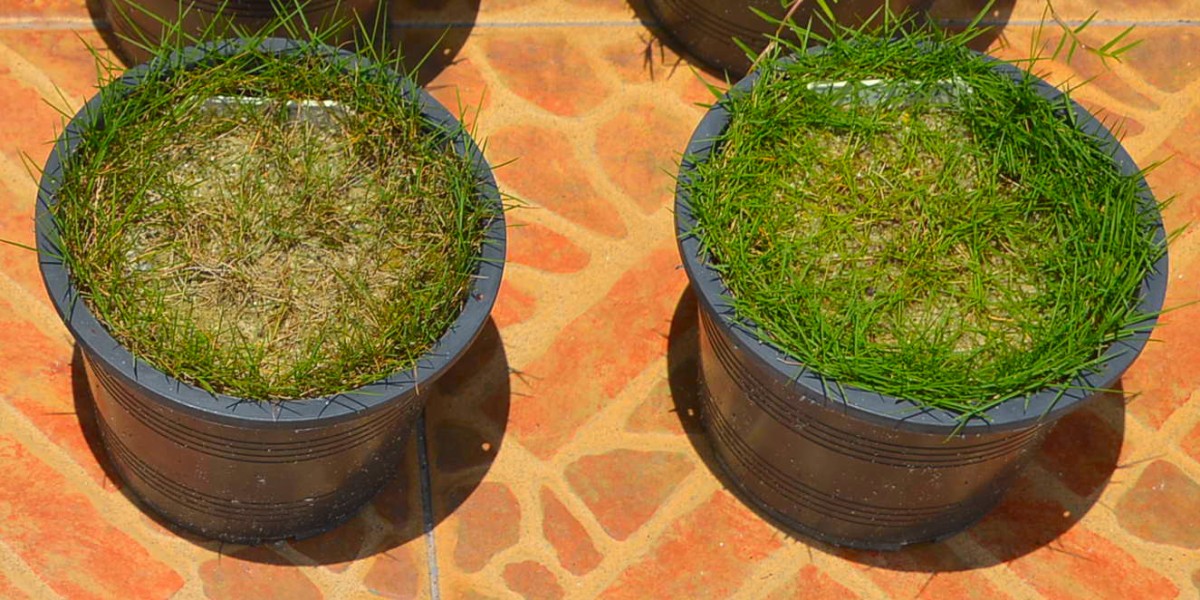On February 28, 2020, I cut some Wana manilagrass rhizomes to a two node length and planted those two node rhizomes in four sand-filled pots. After eight days, I applied the first fertilizer treatment. One pot got nothing, one got N, one got N and P, and one got N and P and K.
After 25 days, plants were developing from those nodes and the pots looked like this.
 Wana manilagrass planted as a two node rhizome and fertilized with N and P, 25 days after planting.
Wana manilagrass planted as a two node rhizome and fertilized with N and P, 25 days after planting.
 Wana manilagrass planted as a two node rhizome and fertilized with N, P, and K, 25 days after planting.
Wana manilagrass planted as a two node rhizome and fertilized with N, P, and K, 25 days after planting.
The grasses continued to spread until they reached the edge of the pots, and the same fertilizer treatments were applied. Nitrogen and P to the one pot, with no K; the other pot received treatments of N and P and K.
Soil properties of the sand at the time of planting were pH of 6.4, organic matter content of 0.7%, Mehlich 3 P of 17 mg/kg, and Mehlich 3 K of 20 mg/kg.
For the first few months, the N and P pot, and the NPK pot, both looked about the same, growing relatively rapidly (compared to the no fertilizer and N only pots — see here for photos of all four pots 72 days after planting) to cover the pot area. Then as the rainy season set in at ATC南店, I started noticing a striking difference between the pot that received K, and the pot that got no K.
The grass that didn’t get any K fertilizer had established just as quickly and intitally had the same color as the grass that got all three macronutrients. The grass that didn’t get K was either seeing widespread leaf senescence, or is getting destroyed by a disease. My guess is disease—the splendidly named inu no ashiato (dog’s footprint)—Curvularia blight.

Of course without having replicated these treatments, I can’t be sure about this. It could be that the disease just happened to infect one of the pots at random and somehow hasn’t been able to spread beyond that. It sure looks like something is going on with K.
Here are the same pots during a sunny afternoon in August.

Of course I did this on purpose, and am happy to see the induced K deficiency, whether it is disease as I suspect, or whether a direct sensecence of the leaves. I can get some idea about which it is during the upcoming dry season, when drought stress can be induced and the inu pressure will be negligible. I might even replicate it this time.